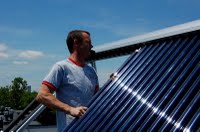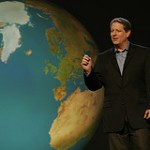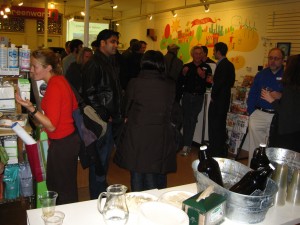At MIT, we are training Science Impact Coordinators (SICs) willing to put themselves in the middle between experts, advocates and regulators. Unless someone is able to manage these difficult interactions, we will miss crucial opportunities to protect dwindling natural resources. What does a graduate student with an undergraduate science degree, a passion for environmental improvement and an interest in managing constructive dialogue in politically-stressed situations need to know to facilitate such interactions? That’s what we are trying to determine.
Six years ago, at the invitation of the United States Geological Survey (one of America’s premiere science agencies), our MIT team put together a set of courses and a field-based training program to place apprentice SICs in the middle of resource management controversies all over the United States. Through an action-research program, more than 25 graduates of MIT’s Department of Urban Studies and Planning have worked on environmental restoration in Mississippi, desalination of the Colorado River, climate change impacts in the Everglades and on the Chesapeake Bay, strategies for maintaining the near-shore fishery in the Gulf of Maine, ways of ensuring that local knowledge is taken seriously in managing the Sonoran desert; dealing with storm water run-off in Somerville, Massachusetts and Aurora, Colorado; helping coastal cities in Massachusetts adapt to climate change risks, protecting endangered habitats in the Rocky Mountains, and coping with water shortages in Eastern Washington. We work under the banner of MUSIC — the MIT-USGS Science Impact Collaborative and our tag line is “Harmonizing Science, Policy and Politics.” (See scienceimpact.mit.edu).
You’d think by now that the science and engineering establishment would realize that conventional approach to injecting “science” and technical analysis into politically-charged policy-making situations isn’t working. Most scientists and engineers still think that all they need to do is put their studies “out there” and the world will use the information appropriately. They are convinced that they don’t have to talk to non-experts or get involved in the hurly-burly of actual decision-making. We also encounter regulators at every level who think that holding a hearing is the best way to engage concerned citizens and stakeholders in resource management decisions. The fact that nothing gets decided in such setting and that no one has responsibility of reconciling what they are saying with what anyone else is saying, doesn’t seem to bother them. Finally, we see no sign that environmental and health advocates realize how important it is for them to engage in joint fact finding and collaborative decision-making with the companies and agencies they are fighting.
Getting the Right Parties to the Table
The first step in resolving any science-intensive policy dispute is getting the right parties to the table. This is best handled by calling on trained mediators (i.e. professional neutrals) to interview all the relevant groups and organizations – on a confidential and not-for-attribution basis – to scope the agenda, identify who should be involved, lay out a work plan, and engage the relevant stakeholders in specifying the ground rules that will govern their interactions. The details of how to do this are now well-known (see Susskind and Cruikshank, Breaking Robert’s Rules, Oxford University Press, 2006). Students in the MUSIC program help prepare these assessments as assistants to professionals working for the Consensus Building Institute (www.cbuilding.org).
Joint Fact Finding
Once all the parties are at the table, including the relevant regulators, the group can initiate scientific or technical investigations required to understand the current situation as well as possible ways of proceeding given the likely impacts of alternative decisions. Often this requires developing models or forecasts. Sometimes it requires gathering new data. Inevitably, it involves interacting with a range of experts (with conflicting disciplinary and technical opinions about what ought to be done or how a problem should be approached).
Building Consensus
Eventually, the group needs to decide what it wants to recommend based on the homework it has done and the concerns of all the stakeholder groups involved. Unlike a hearing where each person sounds off and then sits down; the collaborative processes MUSIC students are learning to facilitate aims to produce informed consensus — even in the face of scientific uncertainty and intense technical disagreements. What’s interesting is how often it is possible to reach agreement in such situations when the parties are given the information and help they need. Books like Susskind et. al, The Consensus Building Handbook (Sage, 1999) offer numerous “worked examples” to show that this is possible.
Linking Informally Negotiated Agreements to Enforceable Decisions
When groups are invited to participate in collaborative resource management, that doesn’t mean that government agencies are turning over to them the power to make final decisions. The product of such deliberations almost always takes the form of a recommendation. Agencies have legal responsibility for making policy choices. Most of the time, though, if all the relevant parties engage in a good-faith effort to produce an informed agreement, the regulators are likely to move in that direction. They take the informally negotiated agreement and translate it into terms and conditions imposed as part of a permit or license. This makes the policy enforceable.
What SICs in Training Need to Learn
We expect SICs to invest two years in intensive graduate study. About 1/4 of their time is devoted to field-based apprenticeships. The rest is spent taking courses dealing with the techniques of policy analysis, tools for forecasting and modeling change in socio-ecological systems, environmental ethics, environmental leadership, strategies for promoting sustainable development, and consensus building strategies. Their field-based assignments are guided by federal agency staff and MIT faculty advisors. They have to fulfill a contract each semester that requires them to produce work products that meet the needs of the communities and agencies with which they are working, and contribute to theory-building. In their final semester, they are required to produce a thesis. In early November 2009, we will publish The Best of MUSIC, highlighting some of the most important theory-building contributions of the MUSIC interns.
We are pushing hard to get the U.S. Department of the Interior to make a formal commitment to hire Science Impact Coordinators at of its headquarters and regional offices. We hope that NOAA, EPA, DOE, Army Corps of Engineers and make similar commitments. It’s time to adopt a new approach to harmonizing science, policy and politics.
 For the past seven weeks, college students from around the region have been camping out on Boston Common on Sunday nights calling for Massachusetts to run entirely on clean energy by 2020. After a final, snowy sleep-out last Sunday, the demands of The Leadership Campaign were answered, sort of.
For the past seven weeks, college students from around the region have been camping out on Boston Common on Sunday nights calling for Massachusetts to run entirely on clean energy by 2020. After a final, snowy sleep-out last Sunday, the demands of The Leadership Campaign were answered, sort of.




 Imagine if I offered someone a 17% return on their investment, that would help to prevent catastrophic long-term environmental consequences and improve the comfort and value of their home. Now envision this person shrugging off this offer and spending their money instead on upgrading their car to a fancy SUV that immediately devalues over time. Would you call this action “rational”?
Imagine if I offered someone a 17% return on their investment, that would help to prevent catastrophic long-term environmental consequences and improve the comfort and value of their home. Now envision this person shrugging off this offer and spending their money instead on upgrading their car to a fancy SUV that immediately devalues over time. Would you call this action “rational”? Nobel Prize winner and former Vice President Al Gore has published a new book
Nobel Prize winner and former Vice President Al Gore has published a new book  The
The 

 President Obama will be speaking in Cambridge at
President Obama will be speaking in Cambridge at